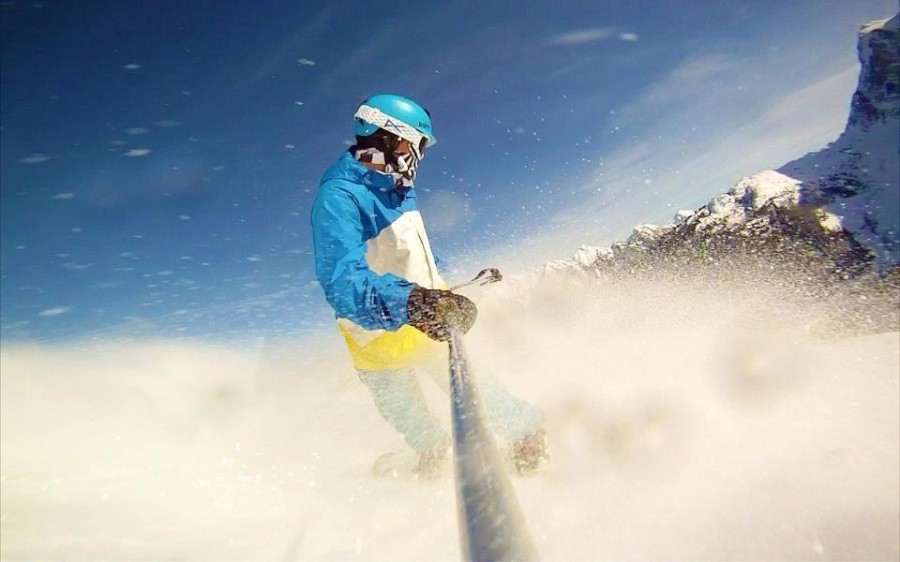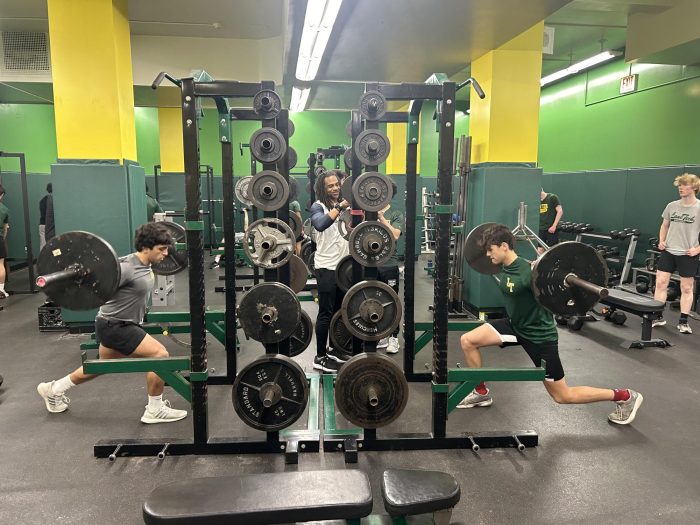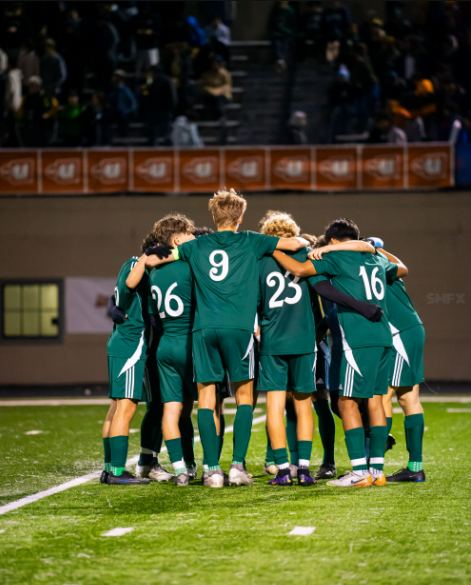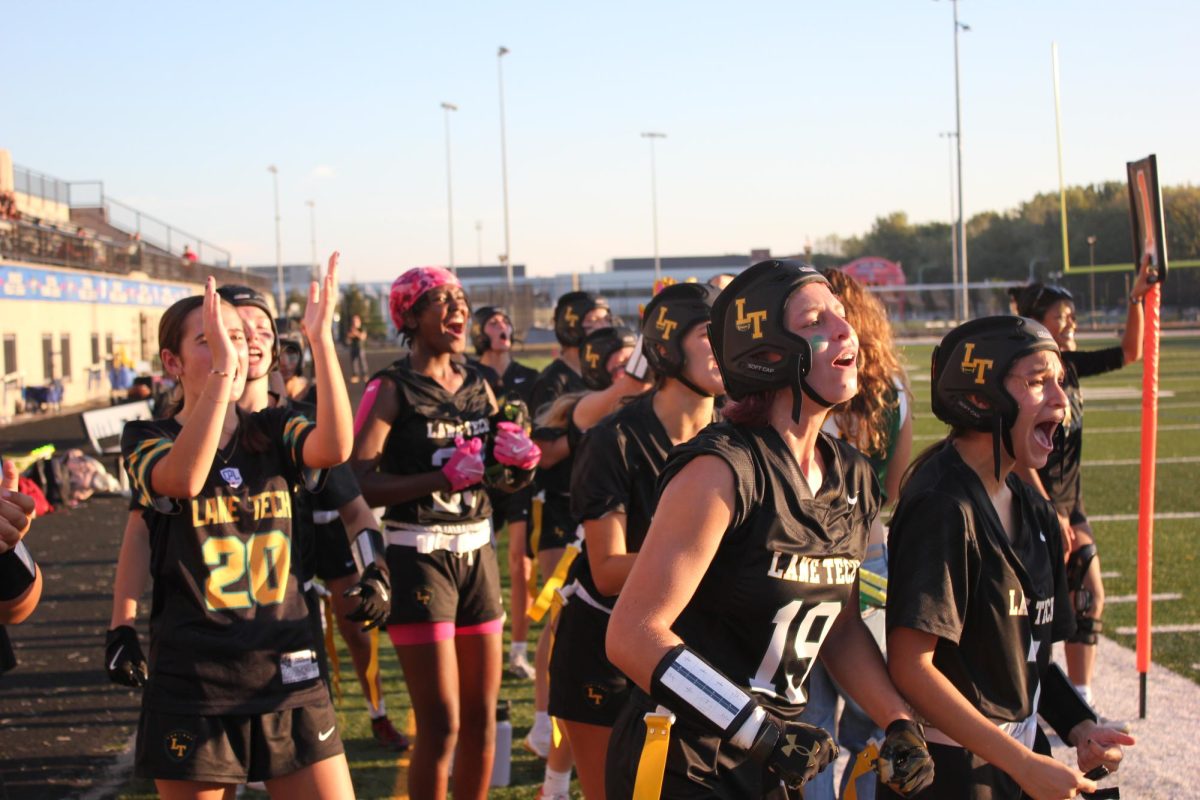By Klaudia Maciag
Bailey Giltner, Div. 577, has been snowboarding for five years now and he has competed in the United States of America Snowboard Association (USASA) Juniors Half Pipe last year in Colorado, finishing in fourth place out of 16 boys, ages 16 to 17 years old. Giltner’s first competition was a boardercross at Raging Buffalo Snowboard Ski Park in Schamburg, IL two years ago. It started out as a bet with his friend who thought Giltner could not podium in the event. Giltner received fourth place, losing the bet and buying his friend a lift ticket.
Giltner has started competing in competitions that can possibly lead him to be a star athlete like Mark McMorris, Sage Kotsenburg, and Iouri ‘iPod’ Podladtchikov. Other members of the Lane Tech Snowboarding and Ski Club have started taking part in competitions in half pipe, rail jams (which are competitions of who can do the best trick on one of the few features, normally a rail), boardercross (a race with four to six snowboarders to see who gets down the fastest over small jumps and hills), and slopestyle (a slope with several features on it including rails and jumps). These competitions are held at places like Devil’s Head, WI, and Chestnut Mountain, IL. Most ski resorts will occasionally hold these competitions; resorts out west, like some in Colorado, will also hold bigger events that are more popular.
In the off-season, Giltner skateboards and practices tricks on a trampoline. Giltner says that by being on a trampoline it helps keep the movements fresh in his mind and helps with the muscle memory. Also, when he learns new things it’s less dangerous and scary to mess up and fall on a trampoline than falling on the hard snow and possibly getting seriously injured.
“[Skateboarding] keeps those muscles moving but the movements aren’t that similar,” Giltner said. “But it’s fun.”
During the winter, some resorts offer packages to learn how to do tricks indoors with a soft landing before trying them out on the slopes. Giltner practices tricks with a friend on a trampoline and sometimes in the snow, but he practices solo for the most part. He also watches some trick videos, but he says they can only help to a certain extent. Giltner likes to watch videos of himself to see any little flaws and areas where he can improve.
“I’d love to be in the Olympics,” Giltner said.
He started snowboarding when his dad gave him his first snowboard for Christmas and he became determined to learn. He has been snowboarding in Canada, Washington, California, Colorado, Utah, Illinois and Wisconsin, but he would love to go to Japan.
When Giltner travels out west, he goes with his family and stays with friends so everything is cheaper. When he snowboards in the Illinois and Wisconsin area he goes with whoever will take him and pitches in for the costs.
Giltner has had his fair share of injuries from the sport, including a broken sternum and a sprained and broken wrist at different times.
“[It] was just laziness,” Giltner said. “I gapped a rail and landed pretty hard on it. It was later in the day so I just let the board slip out from under me and I slammed my chest pretty hard on it.”
Giltner did not need surgery and so he “just dealt with it.” He broke his wrist two years ago at Chestnut Mountain when he was learning how to do a 360 rotation. He over-rotated and caught the edge of his board on the snow and fell on his wrist. He did not even think it was broken till the next day. Giltner says he sprained his wrist last year in a similar way but instead of over rotating, he didn’t rotate enough.
Patrick Fejkiel, Div. 760, used to ski but now he just snowboards and has been at it for three years.
“[I started out] when I saw Shaun White in the Winter Olympics in 2010,” Fejkiel said. “I just really thought snowboarding was cool so I starting looking into it and in no time I was out on the local hill with a rented board learning to snowboard.”
Fejkiel has competed in a snowboard race at Wilmot Mountain, but he does it more for fun rather than the competition.
“It’s sort of a way for me to get away from school and other things for a little,” Fejkiel said.
Fejkiel looks up to Torstein Horgmo, Travis Rice, and Mikkel Bang who have all competed and received medals in the X-Games in Aspen, Colorado. He prefers not to participate in competitions because he does not like that the judges focus on the technicality of the tricks rather than the style.
Fejkiel broke his rib and bruised his kidney when he attempted a 180 rotation but over-rotated and fell. However, he continues to snowboard.
In the off season, Fejkiel has a trampoline and goes to Sky High Sports, which is an indoor trampoline place. He also works out at home, plays club soccer, and longboards.
“I used to skateboard, but now I longboard,” Fejkiel said. “It’s a great way to keep like the feel of a board, even in the off season.”
Dawid Rogowiec, Div. 567, also started out as a skier and converted to snowboarding, but he still continues to ski and snowboard during every winter.
“I [snowboard] more as a hobby. I like to do tricks and all, but I’m not that good,” Rogowiec said.
If he were to go to a competition, he says he’d love to be in the X-Games. For Rogowiec, it’s harder to go out to practice because of work and he has only gone snowboarding twice this season.
Rogowiec attends the ski and snowboard expos in the Chicago area over the summer where there are multiple events, ski resorts advertising themselves, and equipment sales. He also used to skateboard, but does not do so as much anymore.
“I skateboarded before I started to snowboard and it would help me with balance and having both my legs tied together,” Rogowiec said.
Sami Lapka, Div. 664, also skis and snowboards. She has been skiing since she was five but started snowboarding a few years ago and prefers it over skiing. Lapka started snowboarding when she went on her annual family vacation to Steamboat, CO and they all decided to try snowboarding with her dad. She was the last on skis and her family spent a week teaching her how to snowboard and she says she fell in love with it.
For Lapka, the sport is also more of a hobby.
“It can be somewhat of a competition between my family members and I, but nothing serious,” Lapka said.
Lapka would like to participate in competitions in the future, but only if she could get more practice on the mountain to get comfortable and better prepare for whatever competition she might enter. Lapka snowboards at resorts a few times during the year, but sticks to smaller mountains and hills. She says she prefers to go on tree runs, which are ungroomed courses that present more natural obstacles and are not marked. She prefers this to doing jumps and other tricks.
Unlike the other snowboarders, Lapka doesn’t skateboard in the off-season, but she does play lacrosse year round which helps keep her in shape overall.
Rogowiec continues to snowboard because he says he likes the adrenaline rush; he gets to do whatever he wants and it is easier to get up when he falls down. It lets him get away from everything. Giltner keeps snowboarding because he loves speeding down the slopes and hearing the wind whip past his ears. Lapka says she likes being part of her family’s tradition and flying through the fresh, powdery snow.
“It’s an amazing feeling to slice through snow and float across whereever you want basically,” Lapka said. “It’s a lot of freedom, and a feeling you can’t really find anywhere else…It feels like you’re flying.”
“I love stomping a new trick for the first time,” Giltner said. “And I love being outside in the sun, in the gorgeous mountains.”
This free spirit and love of adventure is an attitude seemingly common to all snowboarders.
“Snowboarders are like a family,” Rogowiec said. “We all do weird stupid stuff and we all enjoy it.”





